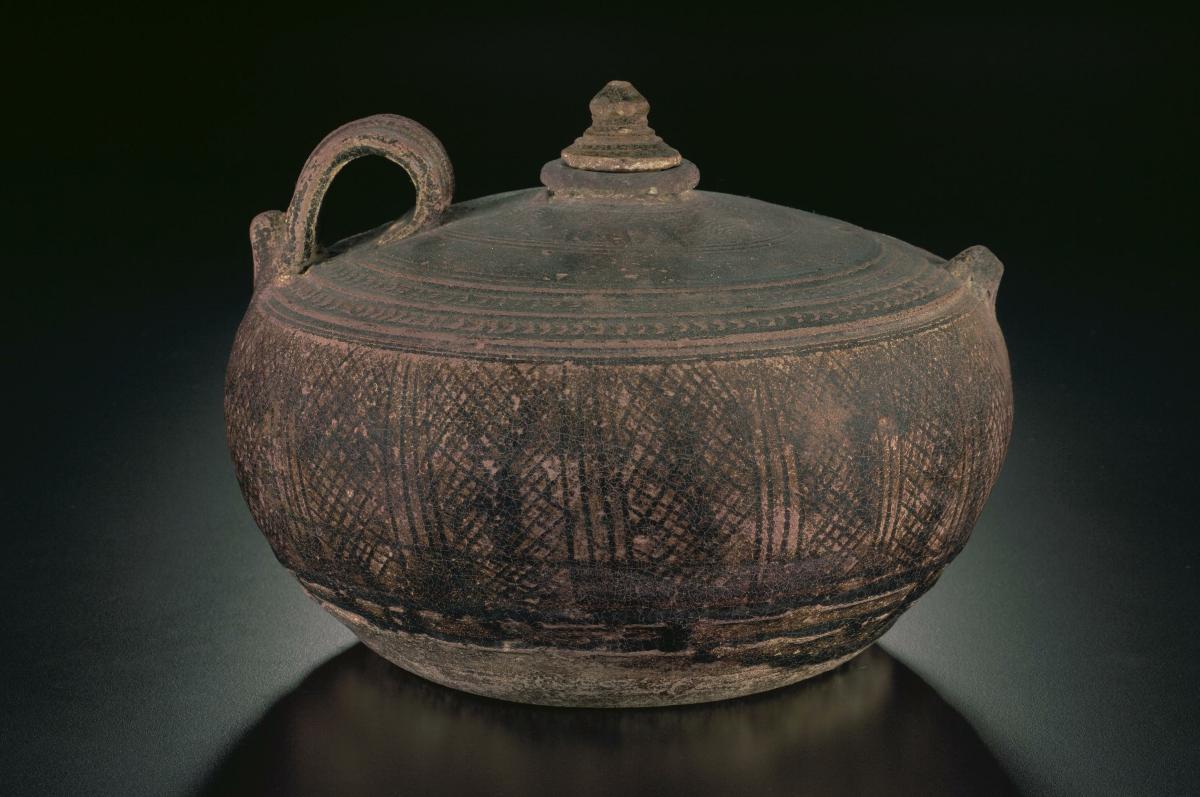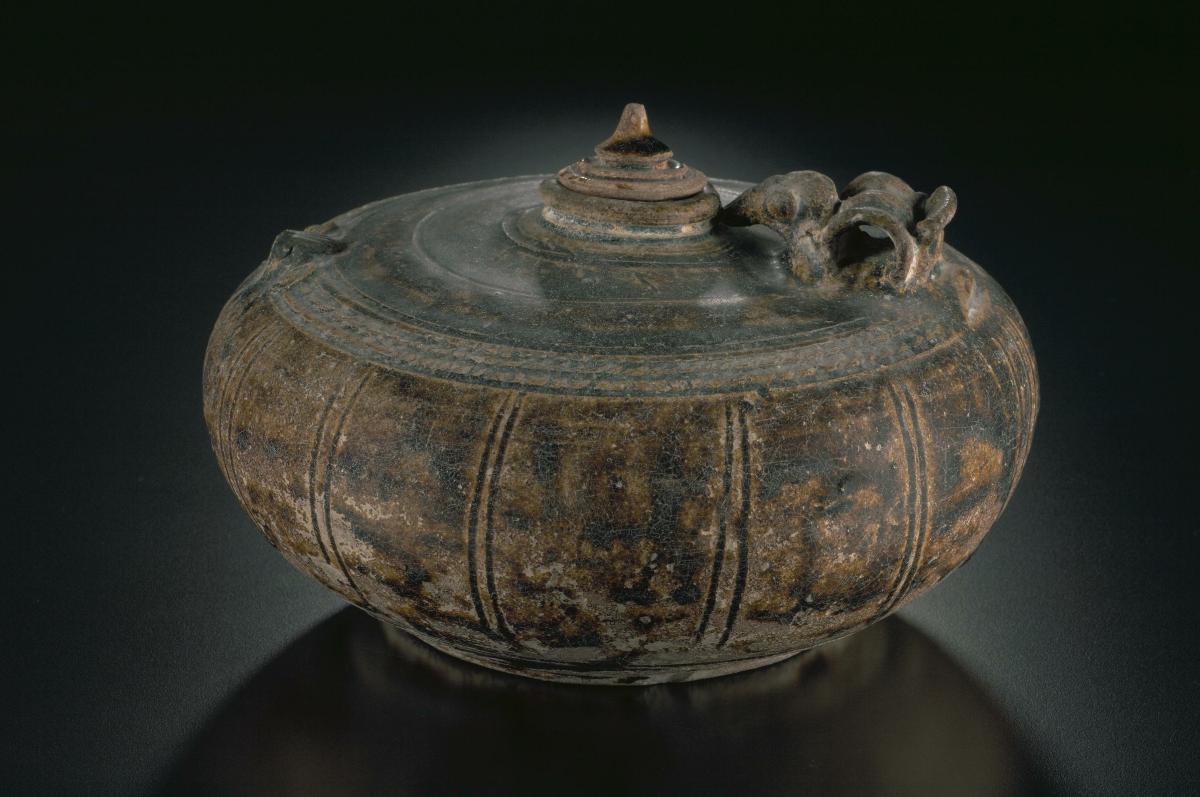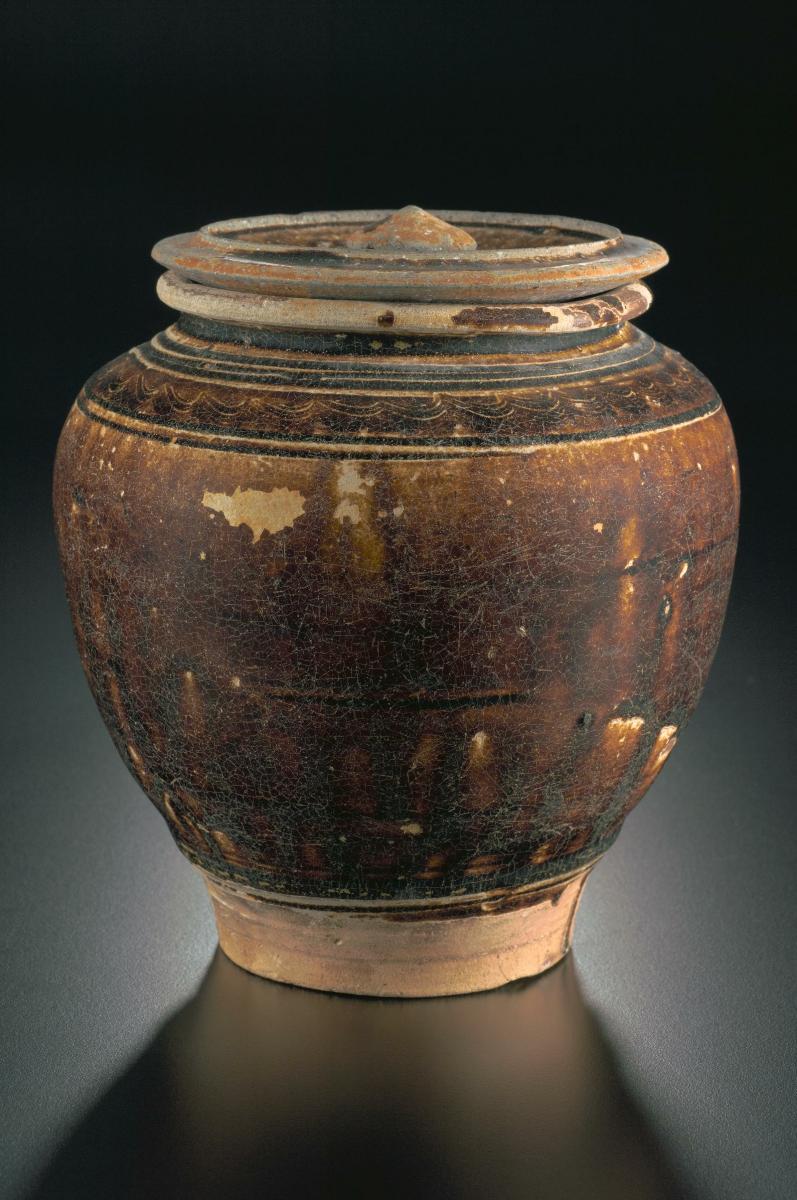This flattened globular jar with lid has an applied strap handle with incised decorations and is covered in brown glaze.Although sometimes called a honey-pot based on the function of a similar modern shape used in rural Cambodia today, the detailed decorative features and seemingly non-utilitarian shape suggests that it may have been intended for religious purposes.Khmer ceramics are glazed with two main types of glaze; one is a thin pale green, translucent and finely crazed while the other varies from mottled chestnut brown to black. Both glazes were also used to decorate a single vessel.Excavations have shown the earliest glazed wares were introduced by the end of the ninth century but gradually diminished after abundant product in the 12th century. By the 14th century, they seem to have disappeared altogether. Khmer pottery was produced mainly for local use rather than as export wares. However, pieces have been retrieved from Cambodia and former Khmer-influenced regions including Thailand, Vietnam, Laos, and the Malay peninsula.















